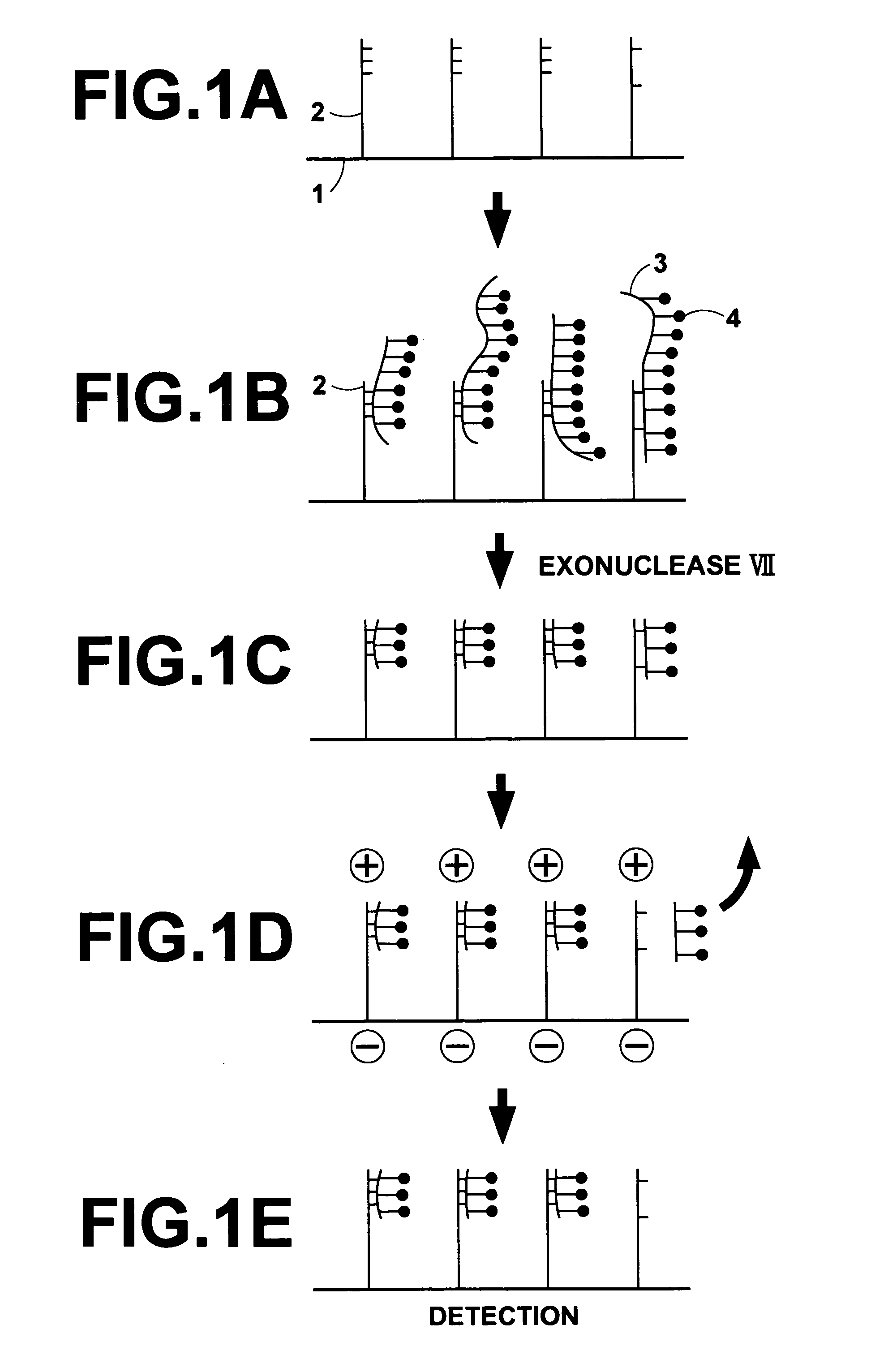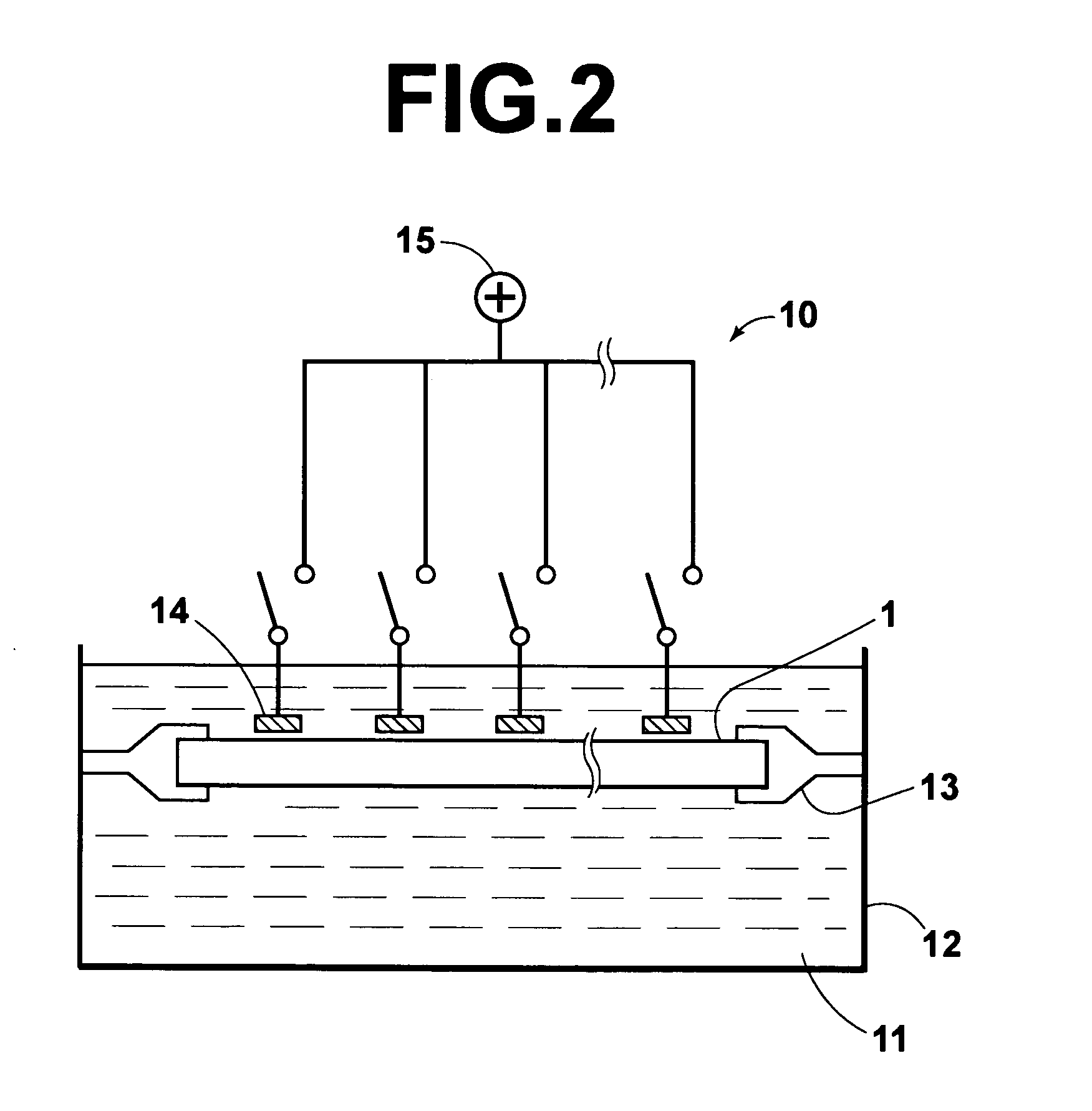Method of removing mismatch bound polynucleotides
- Summary
- Abstract
- Description
- Claims
- Application Information
AI Technical Summary
Benefits of technology
Problems solved by technology
Method used
Image
Examples
Embodiment Construction
[0032] The present invention will hereinbelow be described in further detail with reference to the accompanying drawings.
[0033] An embodiment of the method of removing a mismatch bound polynucleotide in accordance with the present invention, wherein a DNA array comprising a supporting material and a plurality of oligo DNA probes having been fixed respectively to a plurality of regions on the supporting material is utilized, will be described hereinbelow. FIGS. 1A to 1E are explanatory views showing how a mismatch bound DNA is removed with an embodiment of the method of removing a mismatch bound polynucleotide in accordance with the present invention.
[0034] Firstly, a surface of a membrane filter 1 acting as a supporting material is processed such that carboxyl groups (COOH) or aldehyde groups (COH) are exposed from the surface of the membrane filter 1 to the exterior. Also, an amino group (NH2) is introduced into a 5′-terminal of each of synthetic oligo DNA's acting as DNA probes ...
PUM
| Property | Measurement | Unit |
|---|---|---|
| Electric potential / voltage | aaaaa | aaaaa |
| Luminescence | aaaaa | aaaaa |
Abstract
Description
Claims
Application Information
 Login to View More
Login to View More - R&D
- Intellectual Property
- Life Sciences
- Materials
- Tech Scout
- Unparalleled Data Quality
- Higher Quality Content
- 60% Fewer Hallucinations
Browse by: Latest US Patents, China's latest patents, Technical Efficacy Thesaurus, Application Domain, Technology Topic, Popular Technical Reports.
© 2025 PatSnap. All rights reserved.Legal|Privacy policy|Modern Slavery Act Transparency Statement|Sitemap|About US| Contact US: help@patsnap.com


